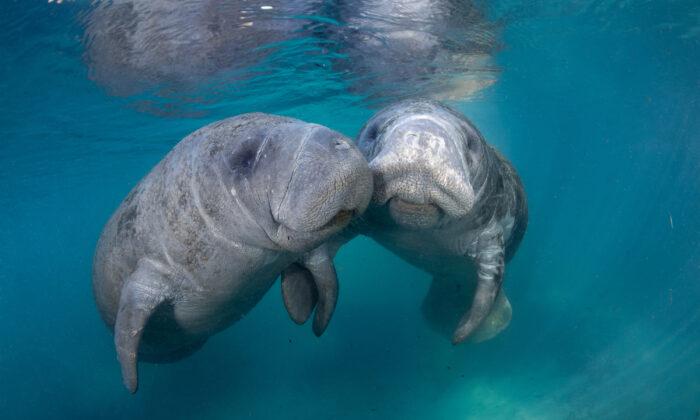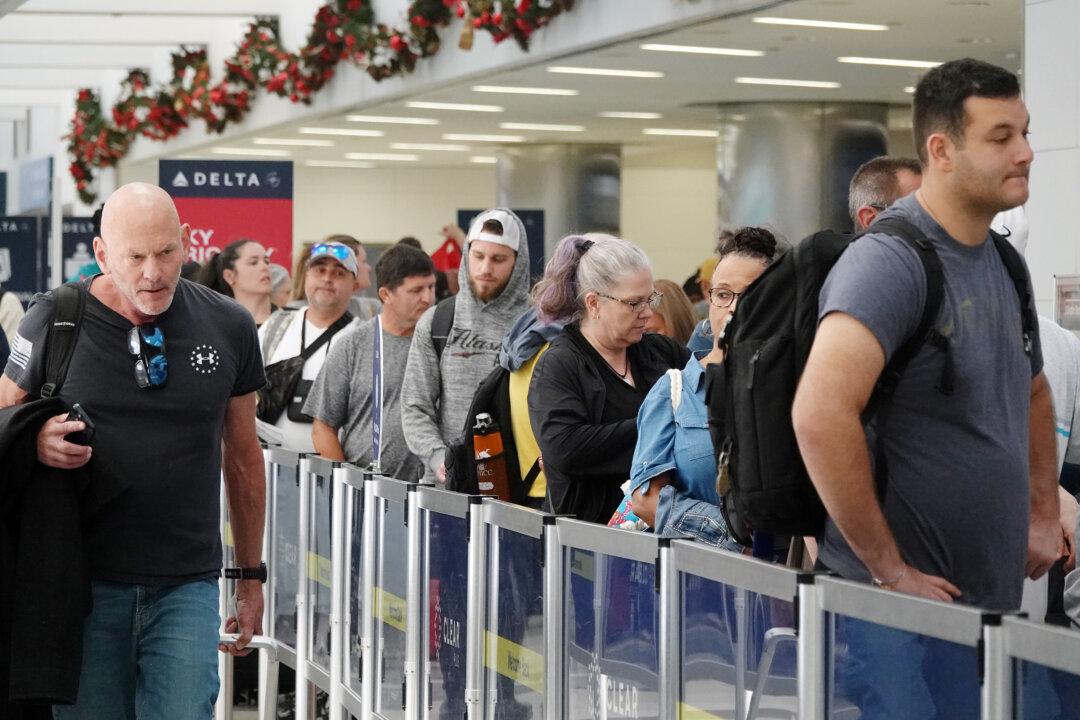Shivering from winter’s morning chill, I apprehensively slip off the back end of a pontoon boat and thread my way into the warm waters of Crystal River on Florida’s west coast. It is cold, in late January, and the air temperature hovers in the upper 30s. Still, the sun is bright in the brilliant blue, unclouded sky.
The watery landscape of the river is mirrored and clear, drenched with flowing sunlight. As I ricochet off from the boat into the water, I gather my courage and wits, as I’m about to swim unnervingly close to a mama and baby manatee, which together probably weigh close to a ton. Just one knock of the mother’s enormous tail could fling me back to Georgia.
I’m sheathed in a skintight neck-to-ankle black wetsuit and weigh much more than I should. To the mother and child, I probably look more manatee than human, although I’m assured otherwise. “She knows you’re human and not a manatee. She’s not going to hurt you,” assures Capt. Ross Files of the Plantation Adventure Center and Manatee Tours in Crystal River. “Don’t be alarmed if she bumps you.”
Learning About Manatees
Manatees, sometimes called sea cows, are graceful and move as slow as sorghum as they propel themselves through the water with their paddle-like tails. Their typical day is one to be envied: they spend it eating, sleeping and floating along with nary a care in the world.“The water must be warm,” says Files, explaining that their body temperature, averaging 97.5 degrees, is close to that of a human’s. “It must be at least 68 degrees, and the water here is an average of 72 degrees all year.”
Why Manatees are Threatened
The Florida Fish and Wildlife Conservation Commission estimates at least 7,520 manatees remain in Florida, an impressive number, considering manatee numbers dwindled to fewer than 2,000 in the 1970s and the species was considered “endangered.” The West Indian manatee, which naturally lives to about 60 years old, became protected under federal law by the Marine Mammal Protection Act of 1972 and the Endangered Species Act of 1973. They are also protected by the Florida Manatee Sanctuary Act of 1978, which provides that the entire state is considered a sanctuary and refuge. In 2017 they were downgraded to “threatened” after federal wildlife managers concluded their numbers were on the rebound.Visiting the Manatees
I swam and snorkeled with the manatees in a tour provided by the Adventure Center of the Plantation on Crystal River, and everything was included in the price, which starts at $75 per person. Expect snorkels and goggles to fins and wetsuits. The boats leave directly from the resort dock, so if you stay at the resort, you can simply walk there from your room.While the springs around Crystal River are the only places in the U.S. where you can legally swim with the manatees, you can also see them at several places around the Sunshine State, according to Visit Florida. Among those places are Three Sisters Springs at Crystal River, Blue Springs State Park in Orange City, TECO Manatee Viewing Center at Apollo Beach, Lee County Manatee Park at Fort Myers, Merritt Island National Wildlife Refuge in Titusville and Manatee Lagoon, a Florida Power and Light Company Eco-Discovery Center at Riviera Beach.
As you fall in love all over again on a getaway to swim with the manatees, you’re also practically guaranteed to fall in love at first sight with these wondrous animals. The manatee season in Crystal River is from November until March, so if you want to see lots of them — Files says that on cold days the river and springs team with up to 700 manatees — watch the weather forecast.






